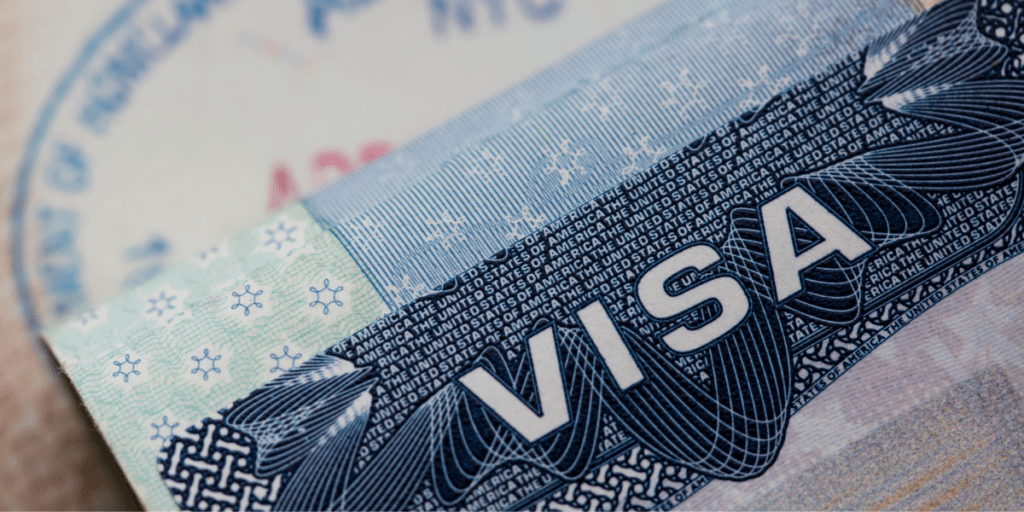Several laws in North Carolina address crimes involving domestic relationships, although the relationship requirement varies. In order for a judge to issue a Domestic Violence Protective Order (or a “DVPO”), the individual seeking the protective order must have one of the following relationships with the individual they are seeking protection from:
- Current or former spouses;
- Persons of the opposite sex who are not married but live together or have lived together;
- Have a child in common; are parent and child or grandparent and grandchild;
- Are current or former household members; or
- Are persons of the opposite sex who are in or have been in a dating relationship.
The individual seeking the protection is the plaintiff, or the person filing the Complaint, and the person from whom protection is sought is the defendant.
You might have noticed that the statute requires people who are not married but are in a dating relationship to be members of the opposite sex. Many members and supporters of the LGBTQ community have expressed concern that the North Carolina domestic violence laws still discriminate against the LGBTQ community. The LGBTQ community is not alone in its concern as a range of leading groups and individuals – from the North Carolina General Josh Stein to Equality North Carolina to the North Carolina Coalition Against Domestic Violence–have submitted briefs, arguing that our current state law is discriminatory and needs to be changed. While a same sex couple who has not and does not live together cannot seek a DVPO, they can seek a No-Contact Order. However, lesser protections are granted under the No-Contact Order, like prohibiting abusers from accessing firearms.
After establishing that one of the above listed relationships exists, the plaintiff seeking the DVPO must show that the defendant has committed one or more of the followings acts upon the plaintiff or upon a minor child residing with or in the custody of the plaintiff:
- Attempting to cause bodily injury, or intentionally causing bodily injury;
- Placing the plaintiff or a member of the plaintiff’s family or household in fear of imminent serious bodily injury or continued harassment, as defined by 14-277.3A, that rises to such a level as to inflict substantial emotional distress; or
- Committing any act defined in G.S. 14-27.21 through G.S. 14-27.33 (first and second-degree forcible rape, statutory rape, first and second-degree forcible sexual offense, statutory sexual offense, sexual activity by a substitute parent or custodian, sexual activity with a student, and sexual batter).
The acts alleged cannot include acts of self-defense. It is important to note that point (2) above is a subjective standard. The judge has to determine if the plaintiff is indeed fearful of imminent serious bodily injury or continued harassment, not whether any other individual would be fearful under the same circumstances. Further, the harassment must rise to a level to inflict “substantial emotional distress.” Often, evidence that is produced to prove “substantial emotional distress” includes beginning or continued counseling/therapy and testimony regarding changes to the plaintiff’s routine born out of fear. Examples include beginning to sleep with a weapon, checking the backseat before entering a vehicle, and an inability to sleep resulting from a fear of the defendant and/or his or her continued harassment.
If none of the relationships outlined above exist, the individual seeking protection may instead seek a No-Contact Order for Stalking or Nonconsensual Sexual Conduct (hereinafter referred to as “a No-Contact Order”). In seeking a Non-Contact Order, an individual must provide either (1) specific dates and acts of nonconsensual sexual contact, or (2) specific dates and acts of being “tormented, terrorized, or terrified” by the defendant who had “the intent to place the plaintiff in reasonable fear for the plaintiff’s safety or the safety of the plaintiff’s immediate family or close personal associates or with the intent to cause, and which did cause, the plaintiff to suffer substantial emotional distress by placing the plaintiff in fear of death, bodily injury, or continued torment or terror.”
All too often, family law practitioners see individuals representing themselves in DVPO or No-Contact Order cases who do not clearly articulate what has happened to them and when it happened. For example, I have watched a pro se party representing herself tell the court repeatedly that her boyfriend called her names and punched her in the face. When the Judge asked her what names she was called or when the events transpired, the woman was unable to provide additional information. While her allegations might have been true, it has been my experience that the court often questions the truthfulness of allegations that cannot be explained in detail.
Being prepared to file a request for a DVPO or No-Contact Order and for the hearing resulting from that filing is critical. It is imperative that a person representing themselves in a DVPO or No-Contact Order case prepare and bring with them the following items, if they exist, to their hearing:
- If the allegations/altercation resulted in bruising or lacerations, pictures taken shortly after the altercation showing the bruising and/or lacerations. The plaintiff should be prepared to explain in detail how he or she received the bruises and/or lacerations.
- Any and all text messages, e-mails, or other forms of written communication from the defendant that support the plaintiff’s version of events. For example, if a defendant sends threatening text messages to the plaintiff, the plaintiff should screenshot or otherwise print off those messages to show the court. The party showing these communications with the court should be prepared to explain how they know the communication is from the other party.
- Any and all medical records resulting from the altercation. You might need proper authentication of these records to get them into evidence and speaking to an attorney about how to do this is advisable.
- If another person witnessed the events alleged by the plaintiff, the plaintiff should consider asking that person to testify on his or her behalf. Often, these situations boil down to a simple “he said, she said” and the Judge can be left wondering who to believe. Having a third party witness testify often gives the court more confidence that one version of the story is more truthful than the other.
- If you have any voice recordings of the incident(s) alleged, make sure to bring those in formats that are audible. If the court cannot hear what is on the records they will likely be rendered useless. When introducing audio recordings into evidence, be prepared to explain the circumstances surrounding the recording.
- A detailed typed out summary of the events you intend to allege or have already alleged. This might be the Complaint that has already been filed or this might be allegations you plan to make in your Complaint. It is imperative that you make all of the allegations you intend to discuss at your hearing in your filed Complaint seeking protection. Therefore, it is just as important to be detailed in your Complaint as it is to be detailed in your testimony in court.
For the items listed above, it is best practice to bring four (4) copies of each item. If you have ten (10) text messages that you want to introduce as evidence, you should bring four (4) copies of each of them.
Acts of domestic violence are very serious and North Carolina lawmakers seem to be taking acts of domestic violence more seriously than ever. A new bill was introduced in the North Carolina House of Representatives that would allow domestic violence offenders to be tracked by a GPS device. Hopefully, in the near future the North Carolina legislature will provide equal protection from acts of domestic violence to the LGBTQ community and will provide more options for enforcement of DVPO’s and No-Contact Orders.
As you can see, the law surrounding obtaining a DVPO or No-Contact Order can be complex and difficult to navigate alone. If you are considering seeking a protective order or have been accused of acts of domestic violence, it is best practice to contact an experienced family law attorney to protect you and help guide you through the process. We are here to help discuss your options and develop the best strategy and plan for you and your family.
Contact our Family Law team today if we can be of assistance.
**If you or someone you know is in an abusive relationship, please encourage them to reach out to local law enforcement, to contact an attorney, or to utilize other resources such as The National Domestic Violence Hotline (1-800-799-7233).

CATEGORIES
Contact an Attorney
Our attorney offer specialized guidance and representation in a variety of practice areas.

REMEMBER: Always speak with your own attorney
This information is provided for informational purposes only; it is not offered as and does not constitute legal advice.
More Insights and Resources
Learn more about what to expect when facing a family law dispute in Charlotte, North Carolina from Family Law attorneys at Dozier Miller Law Group
What NC House Bill 269 Could Mean for Non-Compete Agreements in North Carolina
Non-compete agreements have long been a controversial tool in the corporate world—sometimes protecting legitimate business interests, and…
Protect What Matters Most: Estate Planning for Every Stage of Life
Thinking about the future doesn’t always come naturally. Many of us get caught up in the day-to-day,…
Will a Separation Protect Me Financially?
Separation is never easy, especially when financial questions start piling up. Can you protect your savings? Will…
Practical Custody Arrangements for Families
Trying to figure out custody arrangements? You’ve probably come across terms like joint custody, primary custody, and…
Future-Proof Your Business Against Form I-9 Changes
Running a business is no small feat. Between managing your team, keeping customers happy, and planning for…
When Do You Need an Attorney for a Breach of Contract Case?
Contracts are the backbone of any good business relationship. They bring clarity, set expectations, and hold everyone…
Navigating Immigration Changes and Their Impact on Employment Law
No matter the size of your business, immigration law affects your ability to hire and retain the…
LGBTQ Families and Stepparent Adoption: What You Need to Know in North Carolina
As a family law attorney in North Carolina, I’ve seen many parents assume that their legal status…
What to Do When You Get a Bad Google Review
If you’re a Charlotte business owner, you know just how important your online reputation is. Around 98%…
Managing Your Immigration Status in 2025
The 2024 election brought significant shifts to U.S. immigration policy, many of which have already begun reshaping…










